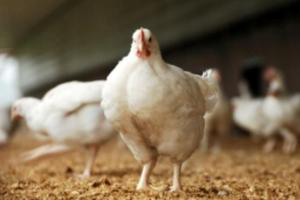Nutrition has effect on litter moisture content

Moist bedding in poultry houses is unwanted as it increases microbial activity and footpad dermatitis. According to researcher Evelien Hangoor from Wageningen UR in the Netherlands, solutions can be found in the way the birds are fed.
In commercial broiler farms, birds are usually housed on litter, composed of bedding materials like wood shavings. Wet litter is a condition in which the litter reaches its saturation threshold for water and cannot hold more moisture. It causes increased microbial activity and, as a result, ammonia is produced and emitted into the air. Wet litter can result in negative welfare issues (e.g., footpad dermatitis) and also a reduced performance. Wet litter is a multifactorial problem, involving management, housing, disease, diet, and gut health factors.
Nutritional effects
Evelien Hangoor who defended her PhD thesis on January 24 on this topic, looked at the nutritional aspects on excreta moisture content, using four different experiments. Different dietary compositions were evaluated and the results show that reductions in excreta water content were related to increased transit time and/or reduced water reabsorption in the hindgut. Insoluble fibres, if they are combined with a coarse diet, can be used to slow down transit time and optimize digestibility, thereby improving both excreta and litter quality. Minerals (e.g., Mg) and other undigested nutrients increase the osmotic load of the digesta in the hindgut and, as a result, more water is moving into the gut lumen. Changing the type or level of nutrients that reach the hindgut by varying dietary ingredients (medium-chain fatty acids, nonstarch polysaccharides, and starch) had limited effects on the ileal microbiota composition.
Monitoring excreta quality
“I showed that nutrition can be used to manipulate excreta and litter moisture content. The effects of nutritional manipulation can be related to (in)digestibility of nutrients, although transit time also seems to be an important factor determining excreta moisture output”, according to Hangoor. She further recommends that current feed strategies need to aim at optimizing the gastro-intestinal tract functions via the diet. “Besides assessment of litter quality, also monitoring excreta quality throughout the growing period is highly recommended for managing litter quality, broiler health, and environmental impact. This should not be limited to measuring total excreta moisture, as the results of my thesis show that the status of the water in the excreta can be different”, concludes Hangoor.













